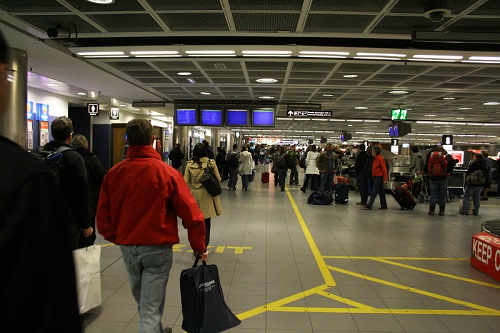 Have you completed your holiday travels for the year? Were they as smooth and predictable as you hoped? The following year might be an interesting one for Minnesota air travel, and not necessarily for reasons relating to the weather. Most people prefer to handle airport security details as quickly as possible and then be en route to their destinations. Next year could conceivably be more complicated, however, in the event that the Department of Homeland Security (DHS) decides a driver’s license is no longer enough for airline passengers to clear security in some states, most notably Minnesota. In these states, drivers licenses have not complied with federal standards as established by the Real ID Act (enacted in 2005). Basically, the standards of the Act require more stringent proof of identity than currently on a standard Minnesota driver’s license, so as to eventually allow users’ information to be shared in a national database. Not everyone is on board with the DHS plan, however. Privacy experts, civil liberty organizations and libertarian groups fear the law would create something like a national identification card. According to the map shown, travelers can circumnavigate Minnesota’s noncompliance with an “enhanced” driver’s license. This is no doubt why thousands of Minnesotans have recently applied for such an enhanced license. The Department of Motor Vehicles can tell you about getting such a license. You can also check out this DHS page to read more about the Real ID Act and where travelers stand on using their drivers license for airport security.
Have you completed your holiday travels for the year? Were they as smooth and predictable as you hoped? The following year might be an interesting one for Minnesota air travel, and not necessarily for reasons relating to the weather. Most people prefer to handle airport security details as quickly as possible and then be en route to their destinations. Next year could conceivably be more complicated, however, in the event that the Department of Homeland Security (DHS) decides a driver’s license is no longer enough for airline passengers to clear security in some states, most notably Minnesota. In these states, drivers licenses have not complied with federal standards as established by the Real ID Act (enacted in 2005). Basically, the standards of the Act require more stringent proof of identity than currently on a standard Minnesota driver’s license, so as to eventually allow users’ information to be shared in a national database. Not everyone is on board with the DHS plan, however. Privacy experts, civil liberty organizations and libertarian groups fear the law would create something like a national identification card. According to the map shown, travelers can circumnavigate Minnesota’s noncompliance with an “enhanced” driver’s license. This is no doubt why thousands of Minnesotans have recently applied for such an enhanced license. The Department of Motor Vehicles can tell you about getting such a license. You can also check out this DHS page to read more about the Real ID Act and where travelers stand on using their drivers license for airport security.
The timing of this coincides with a recent Transportation Safety Authority (TSA) policy mandating electronic screening for “some” passengers, who were previously allowed to opt out of the scanner with a standard pat-down. According to the TSA, the scanner technology offers superior “threat detection capabilities for both metallic and nonmetallic threat objects.” In other words, the scanners can catch weapons hidden in clothes that a pat-down might miss. This predictably raises questions, such as why are they not simply mandating the scan for everyone? And which passengers are the “some” which will still no longer get to opt for the pat-down as opposed to submit to the scanner?
The law of airport security and its constitutional implications may not come up every day, but a couple of law review articles touch on this touchy subject. Check out The Post-TSA Airport: A Constitution Free Zone? recently published in the Pepperdine Law Review. Also see Enhancing Security while Protecting Privacy: The Rights Implicated by Supposedly Heightened Airport Security from the Michigan State Law Review.